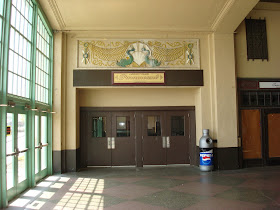
Most fans of the Jersey Shore know of Lucy the elephant in Margate.
Very few know that she once had a cousin located a bit further south in Cape May.
Known as the "Light of Asia" or Old Dumbo by the locals she was designed by Philadelphia architect N.H. Culver and was built for land speculator Theodore M. Reger. ( Culver was no doubt influenced by James V. Lafferty, designer of Lucy in 1881 and Elephantine Colossus built in Coney Island in 1882.
Completed in 1884 it's owner, Reger, ran ads in the local paper soliciting tenants for his colossal Pachyderm. " Parties wishing rooms in the elephant to sell soda water, fancy articles, advertising, etc. and the privilege for bathhouses, ice cream garden and dairy. Apply on the premises or to T.M. Reger, 508 Walnut Street, Philadelphia."
The elephant stood forty feet, ten inches tall and a "howdah" or covered pavilion rested upon the giant's back. The hind legs were equipped with spiral stairs that provided access to the interior of the elephant. Two sets of stairs on either side of the interior led to the howdah, where an observatory offered to tourists for ten cents a scenic view of the Atlantic Ocean.
It was estimated that over one million pieces of wood were required to construct the elephant that was covered with a skin consisting of over 13,000 square feet of tin.
She was located in what later became South Cape May - now the empty stretch of beach between Second Avenue and Cape May Point that today borders the nature preserve.
Although the electric railroad ran along the beach from east Cape May to the point most people preferred to skip it and enjoy the view from the Cape May Point lighthouse for free. Some lots were sold but in the end the Light of Asia was abandoned and after years of vandalism the city sent her to the elephant graveyard.



















 The Boss wrote "
The Boss wrote "





















